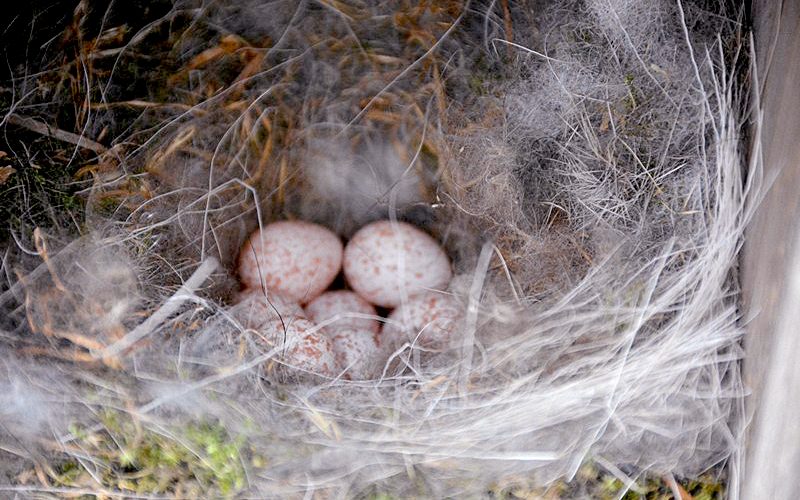By Amanda Bancroft
Ready to go beyond the birdfeeder? Check out NestWatch (one word), a joint project between the Cornell Lab of Ornithology and the Smithsonian Migratory Bird Center.
According to the NestWatch website, the program “teaches people about bird breeding biology and engages them in collecting and submitting nest records. Such records include information about nest site location, habitat, species, and number of eggs, young, and fledglings.” All data is compiled into an online database that provides a glimpse into the lives of nesting birds across the continent, helping scientists “better understand and manage the impacts of environmental change on bird populations.”
You can be a habitat hero for local songbirds like the Carolina chickadee, which is in decline in our region. It makes a great family project to make bird nest boxes and find a spot in your backyard where you’d like to observe birds. This should be a place that matches the needs of the particular species you are trying to attract. To become a NestWatch monitor, first you need to be certified.
Nest monitors go through four steps from start to finish. First, monitors become certified using the online resources and test administered by NestWatch. Next they search for nests created by songbirds or they install nest boxes. They visit these nests every three or four days, maintaining the boxes where necessary and recording anything they observe, including the adult activity. Finally, monitors submit their data to NestWatch online. There is a handy 30-page online manual you can download which helps monitors avoid three common risks: parental desertion of a nest, attracting predators to a nest, and accidental harm to the nest or young. Don’t touch or handle eggs or young because they are extremely fragile and it is illegal to take or possess migratory birds, their nests, or their young under the Migratory Bird Treaty Act.
Did you know that most birds lay their eggs in the morning? It’s best to visit in the afternoon, and avoid visiting at dusk or when it’s dark, or when the weather is bad. Birds may leave their nest unattended for most of the day, so a nest without parents is not necessarily abandoned. Most songbirds only incubate their eggs for up to two weeks, and nestlings may spend two or three weeks in the nest before flying off (fledgling) to new adventures.
Interested in monitoring birds in your own backyard or neighborhood park? Visit NestWatch.org and find information on identifying birds and nests, tutorials on building bird boxes and installing nest cameras, managing predators and competitors, and learning which species you can attract in your particular habitat. You can also listen and watch nests around the country in the bird cam section, including barred owls in Indiana, great blue herons in New York, Hellgate ospreys in Montana, Laysan albatrosses in Hawaii, and more.
Ripples is an emerging online educational center inspired by a holistic approach to making a difference. Follow our journey to live sustainably and make ripples with our lifestyle at: www.RipplesBlog.org.











